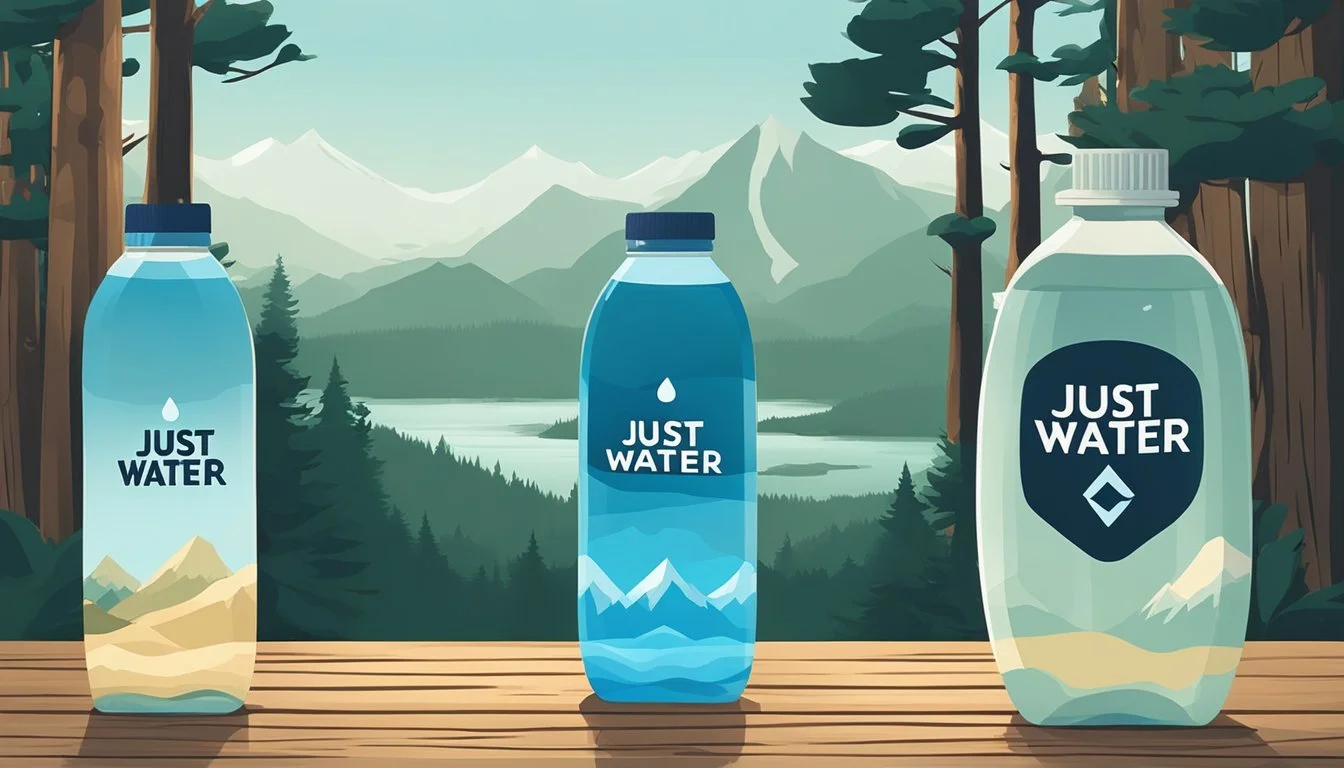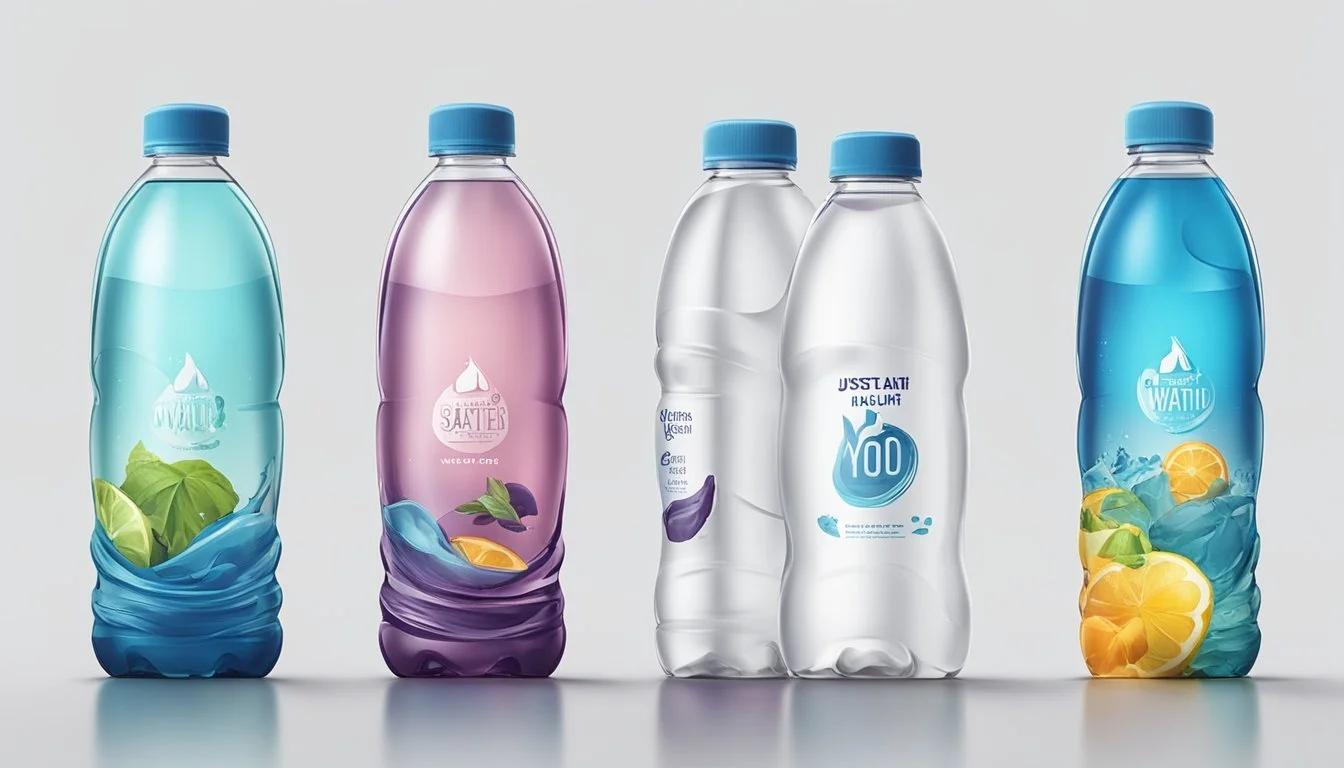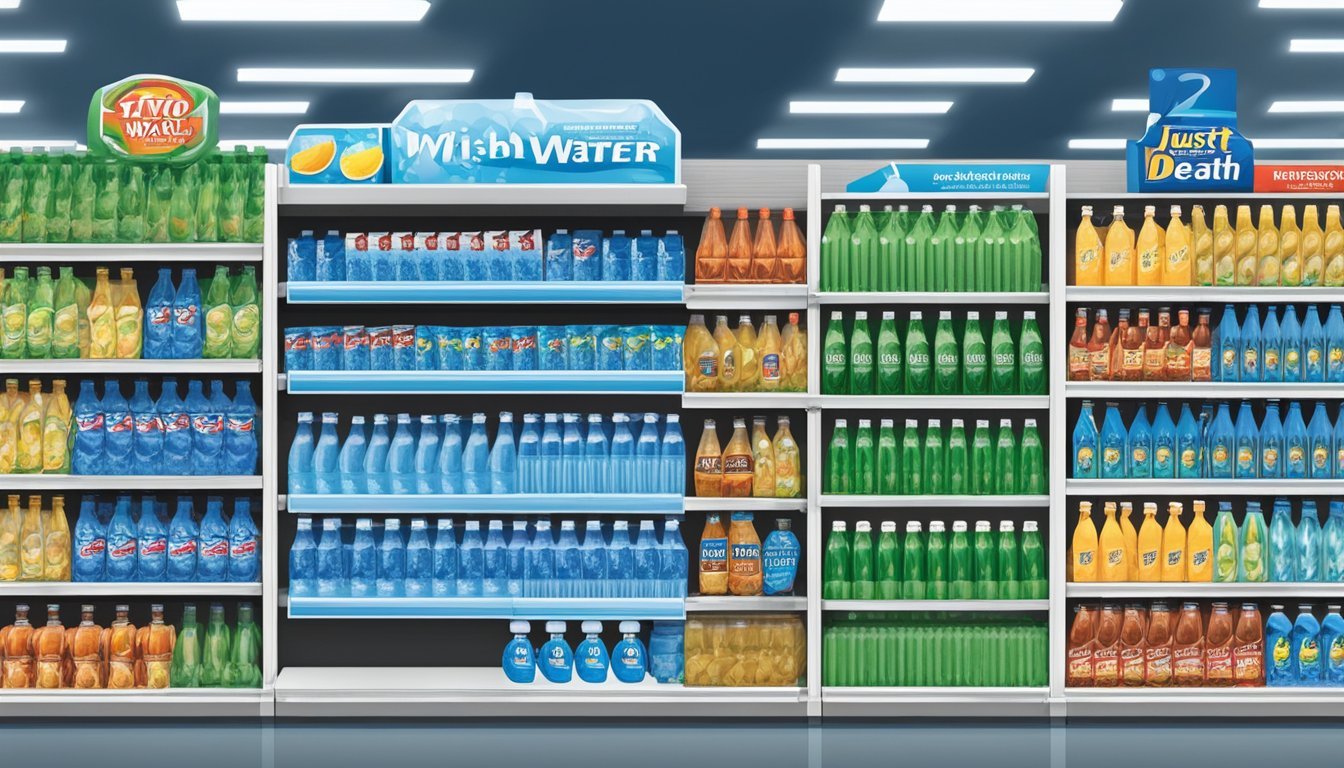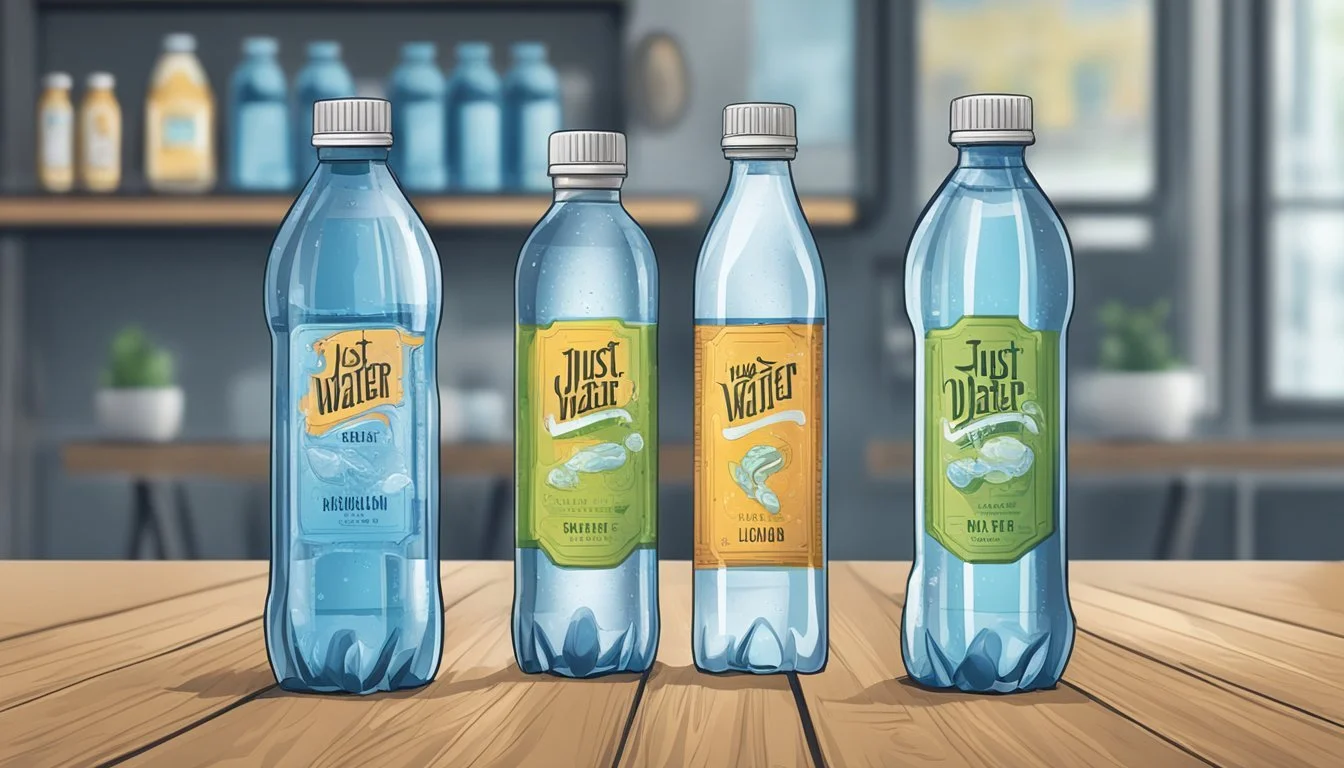Just Water vs. Liquid Death
Which Bottled Water is Better?
When it comes to bottled water, two brands have caught the attention of consumers: Just Water and Liquid Death. Both brands boast different attributes that appeal to various preferences and needs. Just Water claims to provide eco-friendly packaging with 100% spring water, while Liquid Death distinguishes itself with its edgy branding and choice of aluminum cans over plastic.
Just Water offers spring water packaged in paper-based bottles, aiming to reduce plastic waste and provide a more sustainable option. Meanwhile, Liquid Death provides both still and sparkling water options, packaged in aluminum cans that are also environmentally friendly yet designed to stand out on shelves with a rebellious, bold aesthetic. These details make each brand unique in the bottled water market.
For those prioritizing sustainability and pure spring water, Just Water might be the better choice. In contrast, if you are drawn to unique branding and a variety of water types, Liquid Death could be more appealing. This comparison reveals that the "better" option heavily depends on individual priorities and tastes.
The Rise of Bottled Water Brands
Bottled water brands have skyrocketed in popularity over recent years. This section will focus on the growth and unique qualities of Just Water and Liquid Death, two prominent players in the market.
Just Water: Brand Overview
Just Water, founded by Jaden Smith, emphasizes sustainability. The water is sourced from Glen Falls, New York, which is known for its high-quality springs.
What stands out is its 100% recyclable packaging. The bottle is made primarily from paper, reducing plastic waste significantly.
Just Water offers both still and sparkling options. It also maintains transparency about its sourcing and environmental impact, which appeals to eco-conscious consumers.
Retail partnerships with stores like Whole Foods help Just Water reach a broad audience. Its branding focuses on purity and environmental responsibility, making it a socially responsible choice for consumers.
Liquid Death: Brand Overview
Liquid Death operates with an edgy, unconventional marketing strategy. Despite its aggressive name, the brand sells plain water in aluminum cans, aiming to 'murder' plastic pollution.
The brand offers both flat and sparkling options. Liquid Death sources its water from the Austrian Alps, adding a premium touch.
What differentiates Liquid Death is its focus on heavy-metal-themed marketing, which captures a unique market segment. The company has successfully leveraged social media and viral campaigns to build a loyal customer base.
Sold in locations such as 7-11 and Whole Foods, Liquid Death combines high quality with a distinctive brand identity, appealing to both environmentally conscious and novelty-seeking consumers.
Packaging Materials and Environmental Impact
The sustainability of water packaging largely depends on the materials used and their recyclability. Both Just Water and Liquid Death have unique approaches aimed at minimizing environmental impact through innovative packaging solutions.
Plastic Bottles and Eco-Friendly Alternatives
Just Water utilizes cartons that are composed of 82% renewable resources, including paper sourced from sustainably managed forests. The packaging also features a plant-based cap, enhancing its eco-friendly credentials. These cartons are 100% recyclable, promoting a closed-loop system that helps minimize waste.
Traditional plastic bottles, on the other hand, are made from petroleum-based products and contribute significantly to global plastic pollution. Although some plastic bottles are recyclable, the recycling rate remains low, and many end up in landfills or oceans. This highlights the importance of alternative packaging solutions like those employed by Just Water.
Aluminum Cans: Sustainability and Recycling
Liquid Death opts for aluminum cans instead of plastic bottles. Aluminum is a highly sustainable material, as it is infinitely recyclable and requires less energy to produce compared to plastic. Every recycled can saves a significant amount of energy, equivalent to the energy needed to power a television for about three hours.
Aluminum cans are not only durable but also provide better protection for the contents, reducing the risk of contamination. Liquid Death's choice of aluminum aligns with its commitment to environmental sustainability by reducing single-use plastic waste and promoting easy recyclability. The widespread infrastructure for recycling aluminum ensures that these cans have a higher chance of being reused, further reducing their environmental footprint.
Product Offerings and Variations
When it comes to bottled water, Just Water and Liquid Death present distinct options in terms of sources and variations. Each brand has unique products aimed at different consumer preferences.
Water Sources and Purity
Just Water sources its water from the Glens Falls watershed in the U.S., renowned for its natural purity. They focus on maintaining the high quality of the source. The brand emphasizes eco-friendly packaging, using plant-based materials.
Liquid Death derives its water from the Austrian Alps, known for their pristine and mineral-rich streams. The water is canned in aluminum, which is highly recyclable. Both brands ensure the water is free from contaminants and maintain rigorous purity standards.
Flavored Waters and Sparkling Options
Just Water offers a variety of flavored waters, incorporating natural flavors such as berry and lemon. These options cater to consumers looking for a subtle hint of flavor without additional sweeteners or preservatives.
Liquid Death also provides a range of flavored options such as mango and berry, alongside its primary still and sparkling waters. Their sparkling water has a distinctive crispness, appealing to those who prefer fizzy drinks. Both brands aim to provide refreshing, clean-tasting water with natural flavor additives.
Health and Hydration Factors
When choosing between Just Water and Liquid Death, it's important to consider the health and hydration benefits each brand offers. This encompasses examining how well they hydrate, their nutritional content, and the potential impact on overall well-being.
Benefits of Staying Hydrated
Staying properly hydrated is essential for numerous bodily functions. Hydration helps regulate body temperature, maintain skin health, and support energy levels.
Water can also aid in digestion and the absorption of nutrients. Drinking adequate H2O improves physical performance, cognitive function, and mood. For most individuals, enhanced hydration leads to better overall health.
Comparing Nutritional Content
Just Water and Liquid Death both offer pure hydration without harmful additives. Just Water is packaged using primarily plant-based materials, presenting an eco-friendly option.
Liquid Death uses aluminum cans, which can be recycled more effectively than plastic. Both brands avoid the artificial flavors and sugars found in many energy drinks, making them healthier choices. The absence of unnecessary additives ensures that consumers are getting clean, refreshing H2O.
By focusing on these factors, individuals can make informed choices about their hydration needs while considering health impacts and environmental benefits.
Marketing Strategies and Brand Identity
Both Just Water and Liquid Death have distinct marketing strategies that resonate with different audiences. Liquid Death's branding is rebellious and edgy, while Just Water focuses on environmental advocacy.
Liquid Death's Punk-Rock Image and Messaging
Liquid Death distinguishes itself with a bold, rebellious marketing approach. The brand, founded by Mike Cessario, uses the tagline "murder your thirst" and incorporates skulls and gothic imagery. This creates an edgy, punk-rock persona.
Their cans resemble craft beer or energy drink cans, appealing to a young, alternative audience. The brand’s humorous and irreverent advertising resonates well with those tired of conventional marketing tactics.
Liquid Death's anti-establishment vibe sets them apart in the beverage industry. The branding is both shocking and memorable, contributing significantly to their rapid growth.
Social Media Presence and Influencer Collaborations
Liquid Death's social media strategy leverages platforms like TikTok and Instagram to connect with their audience. They use humor and bold messaging to create shareable content that aligns with their brand identity.
Collaborations with influencers and celebrities such as Travis Barker help bolster their visibility. These partnerships add credibility and attract followers who identify with the brand’s rebellious ethos.
Their active social media presence ensures continuous engagement, drawing in consumers through viral content and interactive campaigns.
Just Water's Environmental Advocacy and Outreach
Just Water takes a different approach, focusing on environmental sustainability. The brand promotes its environmentally friendly packaging and ethical sourcing of water. These efforts are central to their marketing strategy and resonate with eco-conscious consumers.
Just Water's outreach programs emphasize community and environmental impact. They partner with various organizations to promote water conservation and provide clean water to underserved areas.
Rather than edgy imagery, their branding is clean and straightforward, reflecting a commitment to sustainability. Advertising campaigns highlight their mission to reduce plastic waste, appealing to consumers who prioritize eco-friendly products.
Consumer Experience and Taste Profile
The competition between Just Water and Liquid Death hinges not only on their packaging but also on the consumer experience and taste profile. These factors play a pivotal role in how each brand is perceived and enjoyed by their audience.
Taste Comparison: Just Water vs. Liquid Death
Just Water is known for its crisp and clean taste, with a natural freshness that appeals to consumers seeking a straightforward, unadulterated water experience. It lacks any form of sweeteners or added flavors, making it a preferred choice for those who enjoy pure water.
Liquid Death, in contrast, offers both still and sparkling options. The sparkling variety is particularly noted for its strong carbonation, providing a robust and refreshing fizz. This positions Liquid Death as a go-to for consumers who appreciate a more invigorating drink. The company’s unflavored sparkling water avoids sweeteners and artificial flavors, resulting in a clean and effervescent taste.
Both brands cater to different tastes, with Just Water focusing on simplicity and Liquid Death adding an element of excitement through carbonation. This difference attracts varied consumer preferences, setting each brand uniquely apart.
Packaging Influence on Consumer Perception
The packaging of Just Water and Liquid Death significantly influences consumer perception. Just Water's packaging is mainly made from sustainable materials, including paper-based cartons and plant-based plastic. This eco-friendly approach resonates with environmentally conscious consumers, enhancing the brand’s appeal.
Liquid Death, on the other hand, uses aluminum cans, which are seen as a more sustainable alternative to traditional plastic bottles. The bold and edgy design of Liquid Death's cans, featuring skulls and gothic fonts, has garnered a unique customer base. Its packaging often makes a statement, appealing to those who prefer a standout, unconventional water brand.
Each brand’s packaging not only affects consumer choices based on environmental impact but also influences the overall drinking experience. The tactile feel and visual aspects of the packaging play crucial roles in shaping the brand’s identity and consumer loyalty.
Availability and Retail Partnerships
Both Just Water and Liquid Death have established significant partnerships and have a broad reach, making them easily accessible to consumers.
Major Retailers and Online Stores
Just Water and Liquid Death are available at various major retailers. Whole Foods prominently features both brands, appealing to health-conscious shoppers. Additionally, Amazon offers convenient online purchasing options for both, with swift delivery. While Liquid Death has capitalized on viral marketing, often featuring in campaigns on platforms like TikTok, Just Water focuses on sustainability.
Multiple retailers, including local grocery stores, stock these brands. The rise in popularity of bottled water brands underscores the importance of wide retail availability.
Local and International Market Reach
Liquid Death has carved a niche with its aggressive marketing and unique packaging, gaining traction internationally. They have a significant presence in North America and are expanding into European markets. Meanwhile, Just Water, co-founded by Jaden Smith, prides itself on eco-friendly packaging and is also extending its reach globally.
Both brands target a wide demographic, from festival-goers in partnership with Live Nation to everyday consumers. This broad market reach ensures they meet the growing demand for premium bottled water.
Cost and Accessibility
When comparing Just Water and Liquid Death in terms of cost and accessibility, it’s essential to understand their pricing strategies and the broader economic implications of choosing bottled water over tap water.
Pricing Strategy and Consumer Accessibility
Just Water and Liquid Death have distinct pricing strategies. Liquid Death is typically sold for about $1.62 per can at major retailers like Target. Just Water, on the other hand, tends to be priced competitively, aimed to be accessible for the millennial demographic.
In terms of availability, Liquid Death is accessible through numerous outlets, including Whole Foods, 7-11, and online platforms. Just Water is also widely available through grocery stores and online, making both brands relatively accessible compared to niche brands like Topo Chico or premium options like Fiji.
Economic Implications of Bottled vs. Tap Water
Choosing bottled water over tap water can have significant economic implications. Bottled water from brands like Liquid Death and Just Water often comes at a higher monetary cost compared to tap water, which is virtually cost-free. This difference becomes more pronounced when considering regular consumption.
The environmental impact also carries economic consequences. The production and disposal of plastic and metal cans contribute to environmental costs, leading some consumers to weigh the economic benefits of tap water against the convenience and brand appeal of bottled options from Coca-Cola, Pepsi, or independent brands like Liquid Death.
Key Takeaway: While bottled water offers convenience and branding, tap water remains the most cost-effective option.
Corporate Philosophy and Future Outlook
Just Water and Liquid Death both adopt strong stances on sustainability and aim to carve out unique positions within the bottled water industry. Their corporate philosophies are rooted in their commitment to the environment, and their future outlooks hinge upon innovation and market growth.
Company Values and Industry Impact
Just Water prides itself on an eco-friendly approach. The brand utilizes paper-based cartons made from renewable resources, which are infinitely recyclable. By prioritizing sustainability, Just Water positions itself as a pioneer in reducing plastic waste in the beverage sector.
Liquid Death, despite its edgy branding, shares a similar commitment. The company promotes its mountain water in aluminum cans, which are also infinitely recyclable. This strategy not only appeals to environmentally conscious consumers but also underscores the brand's disruptive impact on traditional bottled water packaging.
Potential for Innovation and Growth
Innovation is at the forefront of both brands' strategies. Just Water continuously explores ways to improve its packaging and sourcing methods to further reduce its environmental footprint. This includes initiatives to expand its product line with more eco-friendly options and partnerships with organizations that share its sustainability goals.
Liquid Death, known for its bold marketing tactics, aims to leverage its unique brand image to capture a larger market share. The brand's use of viral marketing has already driven significant revenue growth since its debut. Future innovations may include new product variations and expanded distribution channels, ensuring sustained growth and market presence.
Both brands demonstrate a clear vision for a sustainable future, making substantial impacts through their environmentally conscious business models.
More About Just Water
Core Hydration vs Just Water: Which Bottled Water is Better?
Icelandic Glacial vs Just Water: Which Bottled Water is Better?
Just Water vs Aqua Carpatica: Which Bottled Water is Better?
Just Water vs Cascade Mountain: Which Bottled Water is Better?
Just Water vs Crystal Geyser: Which Bottled Water is Better?
Just Water vs Hawaii Volcanic: Which Bottled Water is Better?
Just Water vs Hawaiian Springs: Which Bottled Water is Better?
Just Water vs Kirkland Signature: Which Bottled Water is Better?
Just Water vs Mountain Valley Spring Water: Which Bottled Water is Better?
Just Water vs Nestle Pure Life: Which Bottled Water is Better?
Just Water vs Richard's Rainwater: Which Bottled Water is Better?
Just Water vs San Pellegrino: Which Bottled Water is Better?
Just Water vs Solan de Cabras: Which Bottled Water is Better?
Just Water vs Talking Rain AQA: Which Bottled Water is Better?
Just Water vs Whole Foods 365: Which Bottled Water is Better?
Just Water vs Whole Foods Italian Still Mineral water: Which Bottled Water is Better?
More About Liquid Death
Aqua Carpatica vs Liquid Death: Which Bottled Water is Better?
Core Hydration vs Liquid Death: Which Bottled Water is Better?
Hawaii Volcanic vs Liquid Death: Which Bottled Water is Better?
Hawaiian Springs vs Liquid Death: Which Bottled Water is Better?
Ice Mountain vs Liquid Death: Which Bottled Water is Better?
Icelandic Glacial vs Liquid Death: Which Bottled Water is Better?
Liquid Death vs Cascade Mountain: Which Bottled Water is Better?
Liquid Death vs Crystal Geyser: Which Bottled Water is Better?
Liquid Death vs Crystal Lake: Which Bottled Water is Better?
Liquid Death vs Essence pH10: Which Bottled Water is Better?
Liquid Death vs Kirkland Signature: Which Bottled Water is Better?
Liquid Death vs Proud Source: Which Bottled Water is Better?
Liquid Death vs Richard's Rainwater: Which Bottled Water is Better?
Liquid Death vs Simple Truth: Which Bottled Water is Better?
Liquid Death vs Talking Rain AQA: Which Bottled Water is Better?
Liquid Death vs Whole Foods 365: Which Bottled Water is Better?
Liquid Death vs Whole Foods Italian Still Mineral water: Which Bottled Water is Better?
Mountain Valley Spring Water vs Liquid Death: Which Bottled Water is Better?
Nestle Pure Life vs Liquid Death: Which Bottled Water is Better?
Poland Spring vs Liquid Death: Which Bottled Water is Better?
Purely Sedona vs Liquid Death: Which Bottled Water is Better?
San Pellegrino vs Liquid Death: Which Bottled Water is Better?
Solan de Cabras vs Liquid Death: Which Bottled Water is Better?








